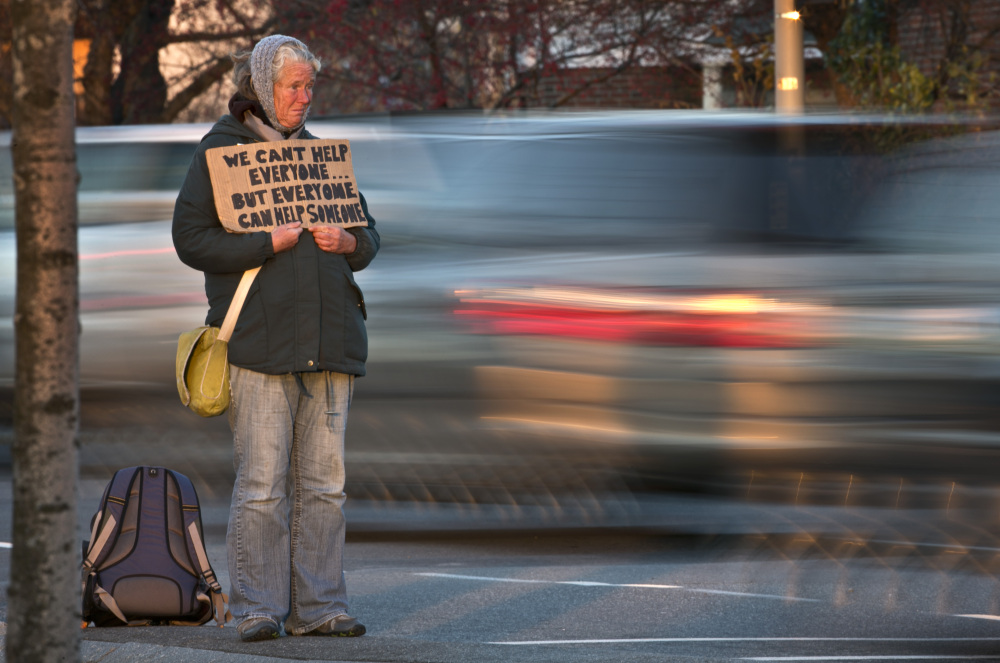The number of homeless people in Maine counted during an annual census fell 9.6 percent from 2013 to 2014, but remains higher than in 2010, according to federal survey results released Thursday.
The U.S. Department of Housing and Urban Development conducts a “point-in-time” survey on one night in January every year during which volunteers count the number of homeless people living outside or in shelters in towns and cities across the country.
Volunteers counted 2,726 homeless individuals in Maine during last January’s snapshot survey, compared with 3,016 individuals in January 2013. That is a larger year-to-year decrease than the 2 percent drop seen nationally.
But while the population of homeless individuals fell 10 percent nationally from 2010 to 2014, in Maine it grew by 14.6 percent in that same period.
Last year, the census found a 26 percent year-to-year increase in homelessness from 2102 to 2013 in Maine. Because the census includes only people who can be located and counted – not people staying in hotels or with friends and family – it is considered more of an indicator of long-term trends than year-to-year changes.
The growth in homelessness since 2010 has been highly visible in Portland, which has experienced record-setting use of its shelters in recent years. While the HUD report does not provide city-level data, the 9.6 percent year-over-year decrease statewide coincides with an intense push in Maine’s largest city to help move more homeless individuals into permanent housing.
For instance, a program launched in January 2014 found permanent housing for 27 of 30 individuals who were considered “long-term stayers,” meaning they stay in shelters night after night, according to a staff report submitted recently to a City Council committee. City officials have also succeeded in closing one “overflow room” used by people unable to find bed space at one of the shelters and reduced the use of two other overflow rooms, the report stated.
Portland has also reduced the percentage the homeless population in shelters who are veterans from 15 percent to 5 percent since 2010, the city reported.
Maine also fares favorably in several key criteria in the annual HUD survey.
Maine had the nation’s second-lowest rate of unsheltered homeless people – those who live on the street – in 2014, at 3.4 percent. Rhode Island reported the lowest rate of unsheltered people, with 1.7 percent, while Massachusetts closely followed Maine at 3.6 percent.
Maine also had the third-lowest percentage of unsheltered individuals who were considered “chronically homeless,” meaning they have been continually homeless for a year or more or have experienced at least four episodes of homelessness in three years.
Portland also was one of five smaller cities mentioned in the HUD report that provide shelter space for all unaccompanied homeless juveniles.
“We appreciate the efforts of local housing and service providers in Maine who are on the front lines of helping us battle homelessness,” Kristine Foye, the deputy regional administrator for HUD in New England, said in a statement. “Together we will continue this fight.”
At least one organization labeled the HUD report “misleading,” however, arguing that the counting method grossly undercounts the number of families and children. That is because the HUD volunteers do not count individuals living in hotels or temporarily with others because they lost their permanent housing.
First Focus Campaign for Children called on HUD to change its survey methods.
“HUD’s defining homelessness in a way that excludes millions of people, including as many as a million children,” Bruce Lesley, president of First Focus Campaign for Children, said in a statement. “And in the process, they’ve delivered Congress a report that’s practically useless.”
Kevin Miller can be reached at 791-6312 or at:
Twitter: KevinMillerPPH
Send questions/comments to the editors.




Success. Please wait for the page to reload. If the page does not reload within 5 seconds, please refresh the page.
Enter your email and password to access comments.
Hi, to comment on stories you must . This profile is in addition to your subscription and website login.
Already have a commenting profile? .
Invalid username/password.
Please check your email to confirm and complete your registration.
Only subscribers are eligible to post comments. Please subscribe or login first for digital access. Here’s why.
Use the form below to reset your password. When you've submitted your account email, we will send an email with a reset code.